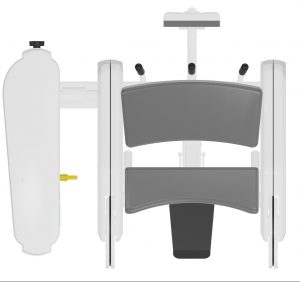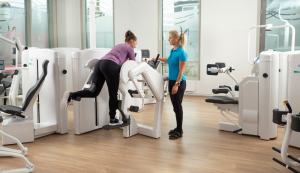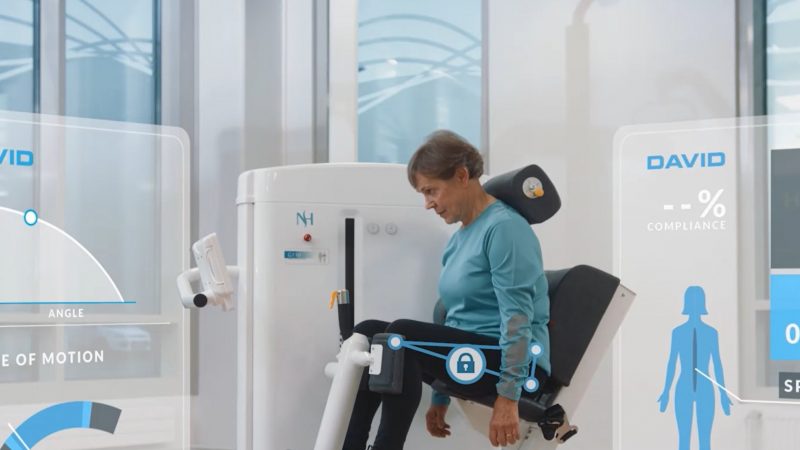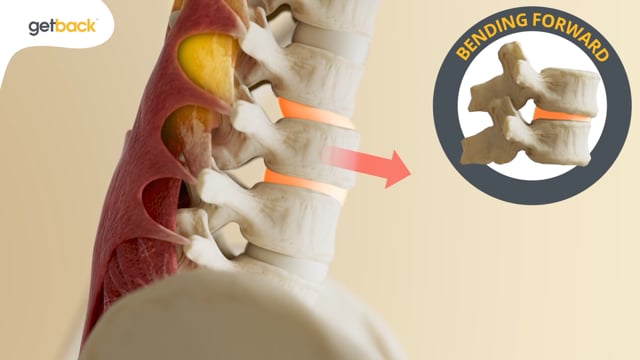To create an optimal biomechanical model for the hip extension there are few factors to consider.
Extending the hip activates strongly also the three hamstring muscles, Bicep femoris, Semimembranosus and Semitendinosus. Although these muscles need also exercise and hip extension is a great one for that, they will easily overtake a great portion of the workload. This is makes targeted hip training very difficult especially with hip replacement patients. Keeping the hamstring muscles in the exercise will also increase the workloads substantially adding more tension to the low back.

Since hamstring muscles are connected below the knee, they can be effectively deactivated by keeping the knee bent during the exercise. This has been arranged in the device with an additional support cushion for the lower leg.

If the objective of the exercise is to include also hamstring muscles, this can be easily done by keeping the lower leg in front of the support cushion.
If we want optimal Gluteus maximus activation, a direct movement backward is not, in fact, the most effective. With rotated hip in the horizontal plane, the extension is directed slightly outward with more direct and effective muscles activation. This is also the reason why the device has three handles.

One of the questions we get is why we selected a bilateral exercise instead of training both sides simultaneously. We have two reasons for that:
1. Just like with our leg or shoulder devices, we must be able to test each side separately. Strength and mobility differences are substantial in injury cases and often people that have recovered a long time ago maintain unknowingly big side differences. So, both testing and training must be bilateral.
2. The pelvis is very difficult to stabilize in a hip extension movement. We know this from experience. David used to have a device in the 80s which trained both sides unilaterally in an inclined, lying position. The device was very effective, and it was disheartening to have to discontinue it, but there was simply no way to fix the pelvis in a secure and safe manner. But when the exercise is done bilaterally, the stability can be maintained easily. This is further enhanced with the standing leg support. This support will make standing easier and less stressful, but it will also secure the knee and the hip joint in a firm position that will ensure pelvis stability.

We have stressed in our other articles the importance of the EVE visual guiding. It has proven to be an effective and practical tool in carrying out rehabilitation programs in a structured and safe manner without having to control patients all the time. In some devices, it is practically impossible to control the movements correctly without such visual aid.
With the hip extension EVE’s role is perhaps more critical than with any other device. The device is highly effective and people are not used to using gluteal muscles in such a targeted fashion. With patients and healthy people alike, it is critical to maintain limited, controlled range of motion and start with moderate loads.
Feedback on the device has been even better than we anticipated. Comments are almost all referring to increased pelvic stability, which is especially important for elderly people. If such a critical muscle group has been neglected before, training can be very rewarding.

We believe that hip stability is a critical factor also for spine health as well as knee health. It is playing such a critical role between the two. The DAVID G260 Hip Extension is an important new tool for recovering and maintaining hip health and also total body health that we are strongly advocating.
 Deutsch
Deutsch 






















